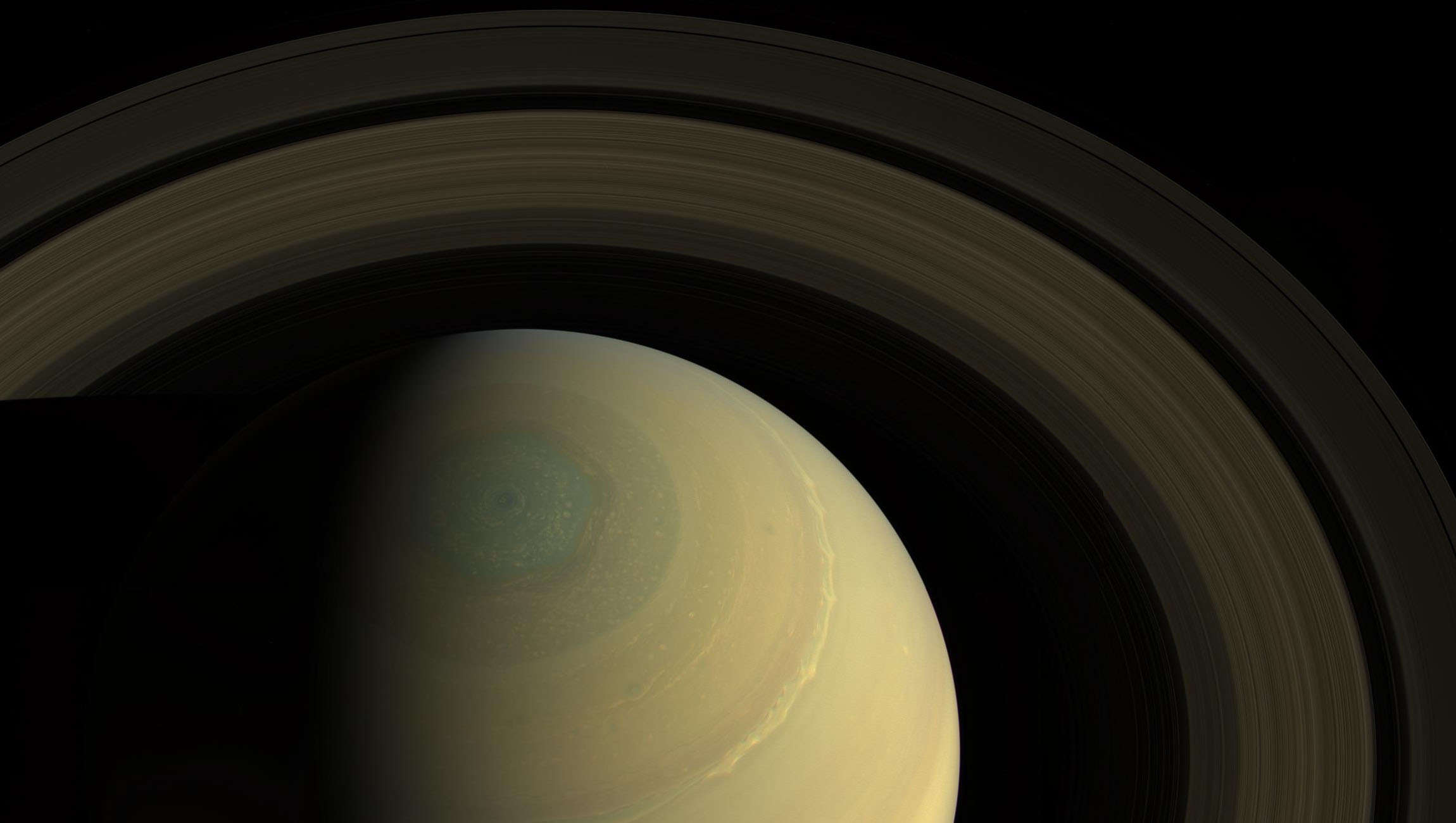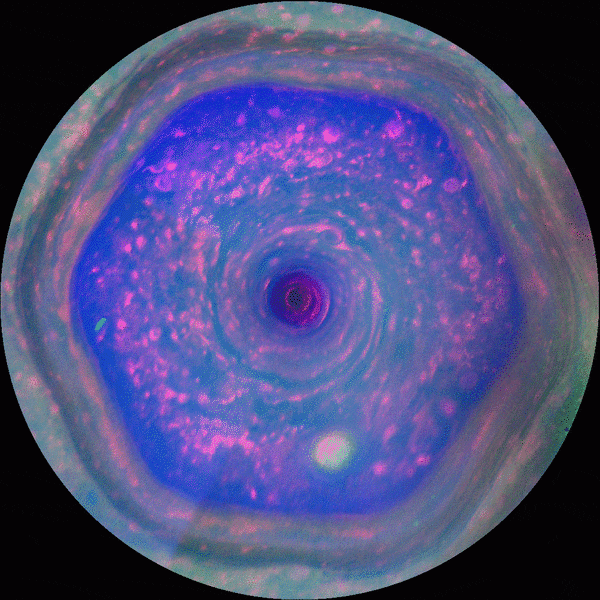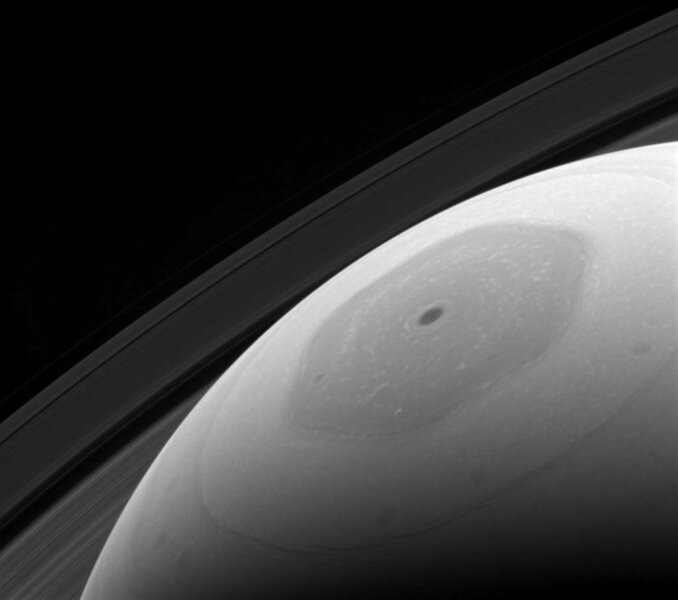Create a free profile to get unlimited access to exclusive videos, sweepstakes, and more!
What is up with that hexagon on Saturn? We might have finally found out

Jupiter may be the planet whose swirling gaseous storms have mesmerized Earthlings since they were first observed through the lens of a telescope, but Saturn is now stealing some of that attention.
Sorry, Jupiter. Even your Great Red Spot isn’t hexagonal.
Saturn has a mysterious hexagon at its north pole that has refused to give up its secrets, probably because neither Voyager 1 nor Cassini was able to plunge that deep and survive. Harvard scientists Rakesh Yadav and Jeremy Bloxham might have finally started to figure out what causes this peculiar feature. They believe that vortexes occur at the planet’s north pole because of atmospheric flows deep within the gas giant, and that these vortexes pinch an intense horizontal jet near the equator—which is what warps the storm into a hexagon.
“The hexagonal flow pattern on Saturn is a striking example of turbulent self-organization. However, the mechanism of its formation and its depth remain unclear,” Yadav and Bloxham said in a study recently published in PNAS.
Voyager 1 first caught sight of this strange turbulence in 1981. Cassini also glimpsed it, but neither probe was designed to delve deep enough to find out exactly where it comes from. There have been two persisting hypotheses about the origin of the hexagon. One suggests that the hexagon is a shallow (if you call depths that go up to hundreds of miles shallow) formation caused by alternating gas jets. The other, which the team found more plausible, says that the eastward jets are actually thousands of miles deep. This unexplored zone of Saturn’s layers is thought to be extremely high-pressure and have a much more volatile temper. Meaning, the planet’s rotation and possibly its other features are just instigating a storm in a place where pressure is tens of thousands of times greater than in the upper layers.
No spacecraft has been able to see anything hidden by Saturn’s clouds. Sunlight doesn't penetrate too far. This can at least explain why, even though Cassini did help scientists understand what is behind the flow of gases on the surface, it couldn’t go much further.
When gas deep inside Saturn is heated and then strays further out, it takes all that heat energy along with it, forcing the layers of gas above to expand, lose density and rise. This is convection. On Earth, convection is the force that causes tornadoes and hurricanes. Yadav and Bloxham created a 3D computer simulation of a phenomenon known as turbulent compressible convection. Gases can easily be compressed because most of their volume is empty space, with particles floating far apart. High pressure will push those particles closer together, leaving less space between them. Pressure gets more and more intense further inside Saturn.
The researchers’ model showed that turbulent compressible convection on the planet supposedly happens when violently whirling compressible gas, which originates in a high-pressure zone deep within the planet’s outer layers, undergoes convection. These vortexes pinch Saturn’s eastward gas jet and trigger a ferocious storm in a shape that is unexpected.
While the simulation produced a nine-sided shape instead of the hexagon the scientists were expecting, this still suggests that Yadav and Bloxham are onto something.
“The hexagon is likely very deep,” they said. “Our model simultaneously and self-consistently produces alternating zonal jets, the polar cyclone, and hexagon-like polygonal structures similar to those observed on Saturn.”
Even if some bizarre life form could just barely survive on Saturn, it is unlikely anything would want to.




























